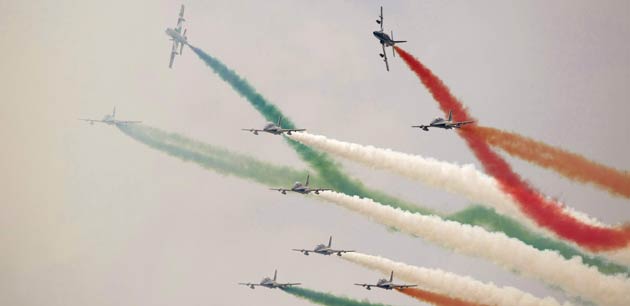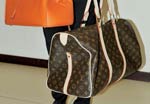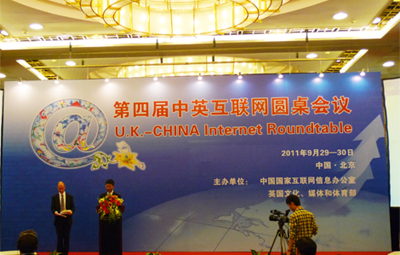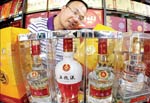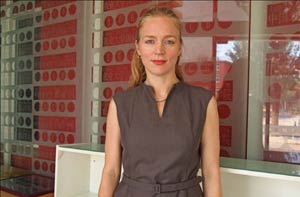Out of the shadows
Updated: 2011-09-30 09:19
By Liu Lu (China Daily)
|
|||||||||
|
A traditional craftsman working on paper umbrellas in Wuyuan county, Jiangxi province. [Wang Guohong / for China Daily] |
The forgotten traditional paper-made umbrella is making a colorful comeback
The decorated oilpaper umbrella is a classic example of Chinese culture. Its traditional manufacture requires special artistic skills and its shape is literally ingrained into the language (the character for umbrella san (伞) is a pictograph of the device). Such umbrellas are as quintessentially Chinese as chopsticks.
But today the traditional paper parasol is mostly seen as a prop in TV historical dramas rather than on the streets. That is because of its higher cost compared to the 20 yuan ($3.13) budget umbrella, whose manufacture China dominates.
According to consulting firm Icinet, China has more than 2,000 factories that make about 80 percent of the world's umbrellas.
Last year China exported nearly 1 billion umbrellas with a total sales revenue of more than $1.3 billion.
Paper umbrellas reflect a tiny fraction of these exports, but are becoming more popular with Chinese art collectors.
Cheng Dehu, manager of Beijing Ruo Shui Tang Oil Paper Umbrella Workshop, is seeing sales revival both in China and in the West.
"The paper umbrella is less widely seen in busy urban life due to the complicated craftsmanship involved in making one, but they are still appreciated and collected as a kind of elaborate artwork," says Cheng, whose 100-year-old company's products are known for their delicate forms and vivid patterns.
Cheng says umbrellas have a history of more than 2,000 years in China. The earliest types were made of silk and later, paper-made varieties became popular.
Originally, umbrellas may have been used more commonly as a cover from the sun and were used around the world. The entomology of the words parasol ("para" meaning to shield, "sol" meaning sun), and umbrella ("umbra" meaning shaded), points to the fact.
An English traveler and philanthropist, Jonas Hanaway, is said to have been the first European to use an umbrella for the purpose of shielding himself from the rain in 1750. The Chinese had known about this for centuries and waterproofed them by coating them with tung oil.
Cheng's company paints Chinese-style water pictures on the paper's surface featuring people, flowers, animals and landscapes.
The higher the quality of painting, the higher the price, he says.
At Ruo Shui Tang, paper umbrella prices range from 200 yuan (23 euros) to about 1,800 yuan (206 euros) and customized works can be ordered, too.
According to Cheng, paper umbrella making is an art form.
"For example, the umbrella ribs should be made from five-year-old bamboo that is specially treated to make it pliable, flexible and resistant to mold and pests," he says.
"The cover of the umbrella is made from special tissue paper that can withstand strong force.
"There are more than 80 processes involved and it takes at least 10 days before an umbrella is finished. This prevents it from being destroyed, distorted or fading."
Cheng's company began to tap into the overseas market in the early 1990s, and about 70 percent of the company's revenue comes from exports to Europe. His company experienced stronger demand after the 2008 Beijing Olympic Games.
Britain has become Ruo Shui Tang's largest export destination, followed by Germany.
"Exports to Britain and Germany alone will bring the company more than 10 million yuan sales revenue each year."
Cheng says many Europeans believe that the paper umbrella is a symbol of mysterious Asian culture. He says his customers are also fascinated by the sophistication and buy them from China as gifts or decorations.
In addition to sales growth overseas, Cheng says sales of paper umbrellas domestically have also improved in the past three years.
Last year the company sold nearly 100,000 paper umbrellas in China, bringing in 800 million yuan in sales.
"Because of the rejuvenation of traditional Chinese culture in recent years, the domestic demand for this traditional gadget has increased year by year," he says.
"Some people even think the umbrella is an auspicious thing that wards off the Chinese concept of an evil spirit."
He says paper umbrellas have a rich cultural connection to the written language.
The traditional character for umbrella represents a group of people under a shelter, so it may symbolize people are united under one roof.
Also, the round shape of the open parasol means reunion and happiness. The production process of paper umbrellas has also been well preserved elsewhere in China.
In 2008 Bi Liufu, a veteran paper umbrella craftsmen in Southwest China's Sichuan province, successfully applied to have his paper umbrella craftsmanship included on the national intangible cultural heritage.
Six generations of the Bi family have been making paper umbrellas but only a decade ago the family company faced a crisis and was on the verge of bankrupcy.
The Bi family was bailed out by local government funding and now receives 300,000 yuan each year.
It now employs more than 60 experienced workers.
Bi has mapped out a bigger plan to develop his business.
"The birth of the mass produced modern umbrella had a significant impact on the paper umbrella business across China," Bi says. "But with the improvement of the national economy and people's aesthetic taste, the once-forgotten paper umbrella has regained its popularity and made a comeback to ordinary people's lives. Growing market demand has revived the dying business."
In 2008 the company's revenue reached 1 million yuan and two years later surpassed 7 million yuan. Bi expects the figure to be even higher this year.
Bi will open two more shops, which he believes will create more awareness about his art and let more people appreciate the beauty of a paper umbrella.
In the coming years he also thinks more young people will be attracted to learn the ancient craft.
Bi says through utilizing higher level of craftsmanship and painting technique, he hopes one day his family's paper umbrella may find a market amid high-end art collectors both home and abroad.





